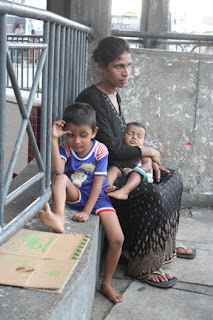By Alam Rind
China has adopted a very cautious approach in responding to the regional developments.
Her security interests are best achieved by having a stable and moderate Afghanistan that is also free of NATO's military presence. China is very keen that the militant Islamic ideology of extremist elements such as Taliban must be prevented from spilling across to the Xinjiang Uighur Autonomous Region (XUAR). To check such a possibility Beijing sealed off Wakhan Corridor a 90 km border strip in 2001. Uighur riots of July 2009 must have forced them to reinvigorate their efforts to check spread of militant Islam in their Muslim majority area bordering Afghanistan.
embarked upon the development of infrastructure in Wakhan Corridor the only direct border crossing between Afghanistan and China. In the area they are constructing a new road, supply depots, and mobile communication centers that will facilitate greater movement and trade across the border.
During President Hamid Karzai's March 2010 visit to China agreements on economic cooperation, technical training and preferential tariffs for Afghan exports were signed with Chinese leaders. Chinese interest in Afghanistan was also highlighted by her $3.5 billion investment in the Aynak copper field in Logar province. It happens to be the largest single direct investment ever made by any country in Afghanistan. As part of the deal signed in May 2008,
China will also build a 400-megawatt coal-fired power plant, a freight railway running from the
XUAR through Tajikistan to Afghanistan, a hospital and a mosque. It is evident that China views
present US deployment in Afghanistan as temporary and hopes that the phenomena of
Talibanisation will subside with the exit of foreign troops from the country. Afghan society will
gradually revert to normalcy, as the economic activities will pick up, China seems to be gearing
up to be able to support Afghan reconstruction. That will also help her achieve her long-term
objectives in the region.
China in order to improve the prosperity of her people and to be the leading economy of
the world has to maintain her present growth rate. That is only possible if there is continues flow
of energy and mineral resources from assured sources. Afghanistan provides a key in terms of her
own untapped mineral and possibly hydrocarbon resources. In any case, it is a gateway to the
resource rich Central Asian Republics (CAR's), having estimated oil and gas reserves of 23
billion tons of oil and 3,000 billion cubic meters of gas respectively. Control over these resources
will truly qualify China to be a super power. Chinese are moving surely but slowly towards the
fulfillment of this objective.
On the other hand, Indian and Chinese efforts to have ingress into Afghanistan are also
motivated by their military and strategic objectives in the region. According to a Chinese military
journal, India's forays into Afghanistan and the Central Asia arena are "designed to achieve four
objectives: contain Pakistan; enhance energy security; combat terrorism; and pin down Chinese
development". On the contrary some Indian analysts feel that China is engaged in "creeping - encirclement" of their country. The concept is based on the fact that China has been able to
develop good relations with India's immediate neighbors' to include Pakistan, Afghanistan and
Iran in the west of India and Bangladesh and Burma in its east. Their observation can't be totally
ruled out. But the fact is that her immediate neighbors' feel intimidated due to her hegemonic
posture and pursuits, whereas, in case of Chinese there is no such fear in spite of her economic
and military might. China is building relationships based on "win-win" propositions while India
is not willing to share benefits and tries to enforce "win-loose" situation on her neighbors. This
attitude is evident from her dealing with Nepal, Bangladesh, Sri Lanka and resolution of disputes
with Pakistan. The covert objective of Indian buildup in Afghanistan has been fully exposed to
the world. During London conference global leaders endorsed Pakistani viewpoint and pressure
was exerted on India to windup her consulates and refrain from terrorist activities aimed at
destabilizing Pakistan. For Pakistan increasing Chinese influence in Afghanistan will be of great
benefit, as on the western front Pakistan will have a friendly and supporting neighbor. India
instead of antagonizing her neighbor's would be better off if she reviews her security
paradigm and restructures it to have friendly neighbors,






